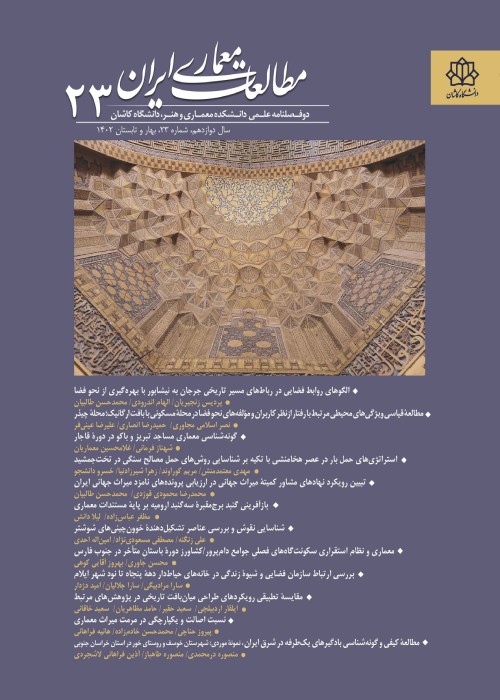Cornucopia Motif in Qajar Art and Architecture: Origin and Evolution
Two common trends in the arts of different cultures and civilizations have principally been, first, preserving and developing native accomplishments, and second, adopting from foreign and imported elements. This dual function existed in Persian civilization from the pre-Islamic to the middle and late Islamic periods, wherein non-native elements found their way into the culture and were adopted or transformed over the course of time. Cornucopia or Horn of Plenty is among such non-native designs, the origin of which dates back to ancient Greek mythology. Cornucopia first appeared in the art of successors of Alexander in Iran, i.e., the Seleucids and the Parthians. After a long absence, it reappeared in the art and architecture of the Qajar period as a result of Europeanization. The present research studies the probable continuation of this decorative motif from pre-Islamic Persian art to the architecture of the late Qajar era, employing a historical method and descriptive-analytical approach. Investigating the visual characteristics of cornucopia, its juxtaposition with native and non-native elements, as well as the contributory factors in motivating artists and artisans of the Qajar period in applying this motif are among the aims to be pursued. The results demonstrate that the use of cornucopia in Qajar architectural decoration (stuccowork, tilework, wall painting) was the outcome of a trend of farangi-sazi (Europeanization), the extreme manifestation of which could be seen from the second half of the Qajar period (Nasserid reign) in all aspects of the social, cultural, and artistic life in Iran. This motif appeared in architectural decorations following the commercial and cultural interactions Iran established with European countries, which led to an acquaintance with western visual motifs. However, this motif was integrated into indigenous decorative artwork in the atmosphere of Persian deep-rooted traditions. The result of this native transformation appears in a harmonious composition with other Persian decorative elements. Persianized cornucopia never appears singularly, but as an element of stylized floral motifs or arabesques as are the defining characteristic of Persian art and architecture.
- حق عضویت دریافتی صرف حمایت از نشریات عضو و نگهداری، تکمیل و توسعه مگیران میشود.
- پرداخت حق اشتراک و دانلود مقالات اجازه بازنشر آن در سایر رسانههای چاپی و دیجیتال را به کاربر نمیدهد.


